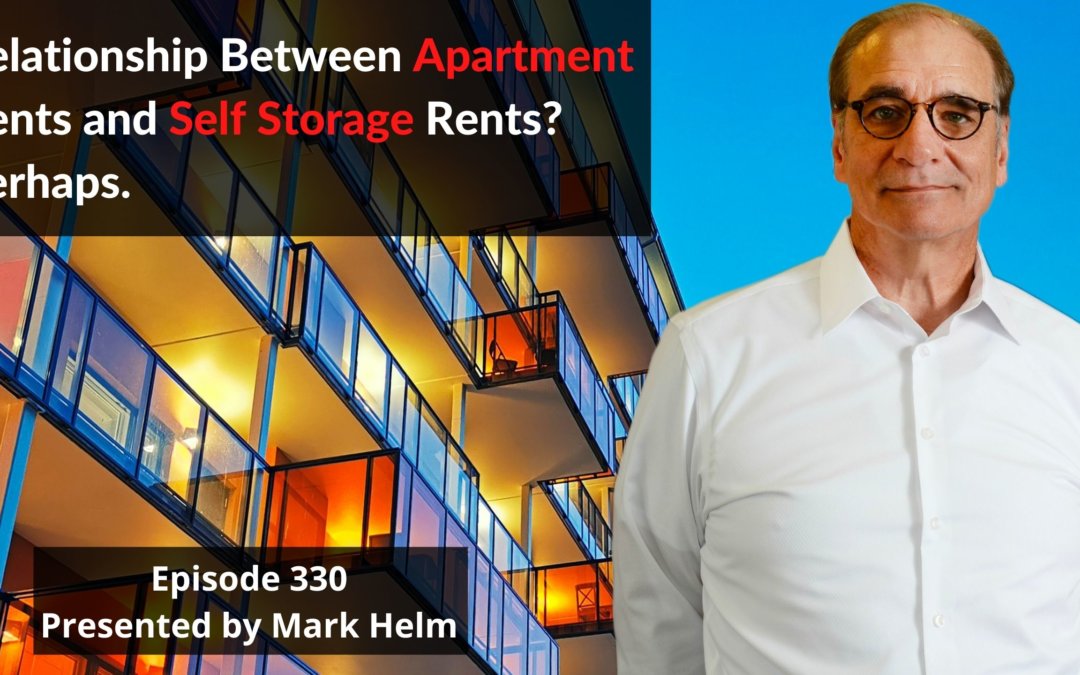Something was brought to my attention by someone I have a self storage coaching relationship with between apartment rents and storage rents.
Specifically, this relationship can impact self storage demand in a market area.
Said another way, how this relationship can affect per square foot per capita “equilibrium” in a self storage market.
I know most people are smarter than I am (especially this person), so I listened closely and researched it myself.
I know everyone’s Google results are different depending on search history. Still, when I Googled “relationship between apartment rents and self storage rents,” nothing came up except the usual self storage paid placements and unrelated information.
So, I went back through our projects and looked at what information I could find.
I was specifically interested in the latest expansion we had just finished.
When we did the feasibility report initially, it showed unmet demand in that trade area before acquisition.
But as often happens, it took longer to get the project started, hurricanes interfered, we had trouble with a contractor, and long story short, it took well over a year to get construction complete.
We had just started leasing then the first quarter of 2020. Remember what was starting then and how much fun that was?
Anyway, I kept pulling up reports on subscription services I was using at the time, and more and more square footage was hitting the market ahead of us in the coastal town where this project was located.
At one point, one report I pulled had self storage exceeding 13 square feet per capita.
I was concerned but kept a strong facade up for employees, partners, lenders, and investors.
Had I pulled up an apartment rent to self storage rent report, here is what I would have seen:
| Average Apartment Rent: | ||
|---|---|---|
| All Types: | $1.49 psf/monthly | $17.87 psf/yrly |
| Average Self Storage Rent: | ||
| Climate Controlled: | $1.36 psf/monthly | $16.32 psf/yrly |
| Non-Climate Controlled: | $1.07 psf/monthly | $12.84 psf/yrly |
When we started leasing up, even with the first quarter during the pandemic, this project exceeded our lease-up projections.
My friend tells me that he believes that when apartment rents exceed storage rents in a market, that fact alone increases self storage demand.
His un-verified position makes sense to me.
As best I could, I went back and recreated the apartment rent to storage rent relationship in the projects, and when apartment rents were higher than storage rents, those projects leased up faster.
That is just our portfolio, which does not necessarily translate to the industry. Different sized markets may have different relationships. A smaller or rural market may have no relationship to self storage demand.
But I suspect in most markets, it does.
Same with housing cost. Without a big leap, we could assume that as apartment rents go up, so does the cost of housing in a given market.
As living quarters get cramped in these markets, self storage becomes a cheaper alternative than moving (much easier too).
I have written episodes on how I question the per square foot per capita number often and do not always see in reality what that number indicates should be happening. Specifically, I see projects lease up quickly in some high ft^2/capita areas.
Perhaps this relationship, when apartment rents exceed storage rents, more demand is placed upon storage than normal.
I call on the industry to begin exploring this ratio, start tracking it, and see if there is a quantifiable way to express this on self storage demand.
I am tracking it until then, and it is one of the benchmark numbers I analyze when making decisions.



